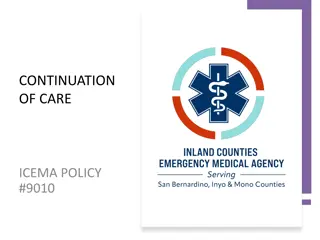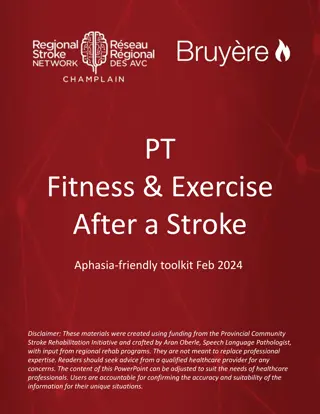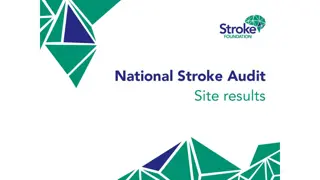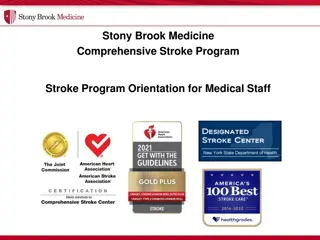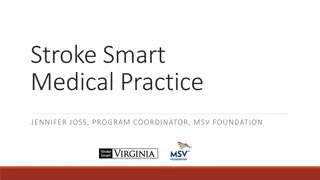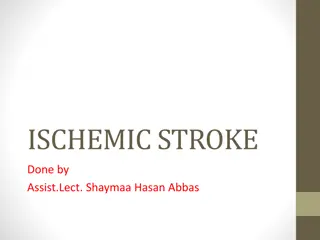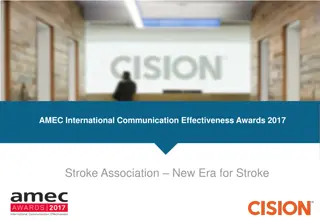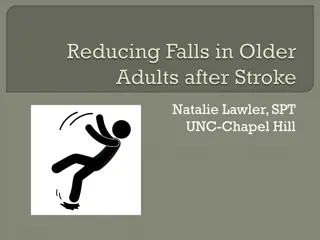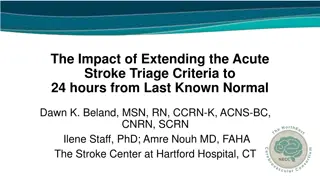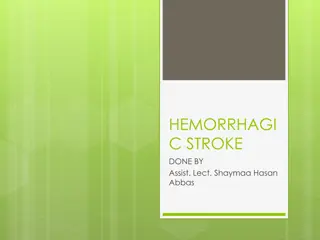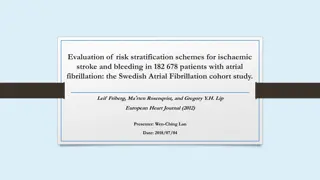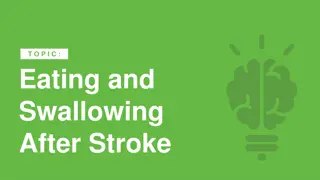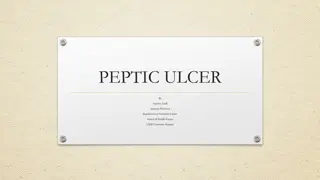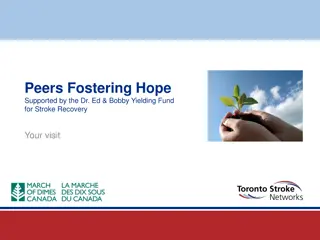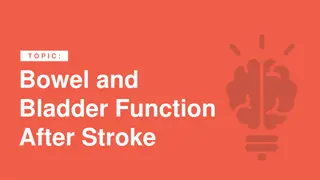Stroke: Causes, Symptoms, and Types
Stroke is a significant health issue with high mortality rates and lasting disabilities. Learn about the different types, signs, and epidemiology of stroke, including ischemic and hemorrhagic strokes. Understand the impact of strokes on brain function and the importance of early detection for prompt medical intervention.
Download Presentation

Please find below an Image/Link to download the presentation.
The content on the website is provided AS IS for your information and personal use only. It may not be sold, licensed, or shared on other websites without obtaining consent from the author.If you encounter any issues during the download, it is possible that the publisher has removed the file from their server.
You are allowed to download the files provided on this website for personal or commercial use, subject to the condition that they are used lawfully. All files are the property of their respective owners.
The content on the website is provided AS IS for your information and personal use only. It may not be sold, licensed, or shared on other websites without obtaining consent from the author.
E N D
Presentation Transcript
Stroke Definitions Stroke A "neurological deficit of cerebrovascular cause that persists beyond 24 hours or is interrupted by death within 24 hours (WHO). Brain Attack
Stroke Definitions Transient Ischaemic Attack (TIA) stroke symptoms that resolve completely within 24 hours. Acute Ischaemic cerebrovascular syndrome
Stroke Epidemiology : Stroke is a major health problem 56 000 people die as a result of a stroke 11% of all deaths, 1/3 most common form of death MOST common cause of adult disability half dependent on others for everyday needs half of stroke survivors do not have full restoration of function
Stroke Signs of Stroke FAST - the Face Arm Speech Test Assessment of three specific symptoms of stroke: Facial weakness - can the person smile? Has their mouth or eye drooped? Arm weakness - can the person raise both arms? Speech problems - can the person speak clearly and understand what you say?
Stroke Types of Stroke Ischaemic (85%) following thrombosis or embolism. Interruption of blood supply (oxygen, nutrients) to neurones. Neuronal death leads to loss of function.
Stroke Haemorrhagic (15%) Intracranial bleeding Damage can be caused by compression of tissue from an expanding haematoma, direct toxic effects of blood cells (free iron) and interruption of blood supply to neurons. Surgical interventions required.
Stroke Brain Attack Ischaemic stroke involves an interruption to the blood flow to the brain causing hypoxia and hypoglycaemia Can be GLOBAL entire brain following cardiac arrest Can be FOCAL particular region characterized by intense foci (core) and penumbra (area surrounding the core where neuronal death is delayed).
Stroke pathophysiology Immediate consequence of the ischaemic insult at the core: Rapid depletion of oxygen leads to a cessation of oxidative phosphorylation, glucose and glycogen stores consumed within only 2-3 mins Accumulation of lactate and increases in CO2 tension produces acidosis inhibition of active transport mechanisms.
Stroke Loss of calcium homeostasis Breakdown of membrane phospholipids and the release of free fatty acids Anoxic depolarisation/excessive release of glutamate into extracellular space and glutamate transporter reversal. Oedema neuronal swelling resulting from influx of ions and H2O Necrotic cell death in core.
Stroke Risk factors Age The chance of having a stroke approximately doubles for each decade of life after age 55. Heredity (family history) and race Gender More common in men than in women, however more than half of total stroke deaths occur in women. Prior stroke, TIA or heart attack
Stroke Risk factors ( that can be controlled) High blood pressure Cigarette smoking Diabetes mellitus Carotid or other artery disease Atrial fibrillation or other heart disease including dilated cardiomyopathy heart valve disease and some types of congenital heart defects. Sickle cell disease High blood cholesterol Poor diet (sodium, saturated fat, cholesterol) Physical inactivity and obesity
Stroke Hypertension Lifestyle changes to promote a healthy cardiovascular system e.g. Blood Pressure (BP) increase by 5 mm Hg increases stroke risk by 35-40%, decrease BP by 10 mm Hg decreases stroke risk by 40% Suggestions to decrease BP?



